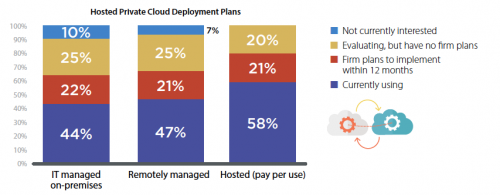
Juggling a rapidly increasing customer database may be a nice problem to have for your fast growing business. But how you use this data will very likely define your success in the digital economy, where customer experience, stickiness and behaviour are as vital as metrics like profit and loss.
A fast growing business will typically outgrow several customer database tools in its first few years. Little wonder that a good CRM system tops their wish list. According to Forrester, business technology that helps win, serve and retain customers will account for over half of the $2.9 trillion in new project spend in 2016-17.
Once customer data capture hits a certain velocity, the shortfalls in running email and spreadsheets from PCs soon become apparent. Especially where you want to keep moving fast.
Evidence suggests the faster you execute, the more quickly you’ll win customers. Moreover, companies that use analytics extensively see profit improvements 126% higher than competitors who don’t. And keeping your growing customer base fully engaged represents a 23% premium in terms of share of wallet, profitability, revenue and relationship growth.
Crucially, you need to find the most secure way to guard your ‘secret sauce’. Whatever your blend of customer data and intellectual property, chances are you’ll want to keep it close to hand and have it backed up automatically.
Tricky choices
The question of where to invest, aka the ‘buy, build or rent’ conundrum, is a tricky one when your business starts to scale at pace.
With many young companies being cloud native (born in the cloud) or taking a cloud first approach, the common assumption is that the days of building your own infrastructure are fading. A Cloud first approach offers a better investment model. Pay as you grow can avoid substantial outlay for hardware and training. However, there remain two key drivers for investing in on-prem:
- You’ve may have already reached a size at which point it becomes more cost efficient to run infrastructure on premises
- Security (the most compelling driver) When you’ve got data you want to keep securely under your own roof
Additional factors in favour of on-prem include:
- Building a Disaster Recovery solution where you don’t wish to rely fully on Cloud or managed hosting
- If tech development is core to your business, you have a development team, and you want to develop in the Cloud but run your apps on-prem for performance and control
- If you operate in a regulated market such as financial services, and are subject to specific rules around data sovereignty and security
Different clouds for different crowds
Contrary to popular belief, cost is not the main consideration when choosing between build, buy or rent. Some companies pay a premium for the agility and scalability public cloud provides. Others pay a premium for on-prem private cloud to get the benefits of guaranteed performance, governance and security.

According to IDC’s latest CloudView study, more than 60% of British organisations now use cloud, with most of these having some form of hybrid.
Meanwhile, Forrester believes that with the potential for big rises in the price of cloud platform services and the costs associated with infrastructure hardware and software going down, a decision to own rather than rent infrastructure is looking increasingly rational.
Take control
Whether you choose to build, buy or rent infrastructure, retaining control of your data centre should be viewed as a business enabler rather than a cost centre.
If you’re a fast growing company, it can pay big dividends to choose an on-prem platform that delivers cloud-like agility (on demand, as a service) and economics (pay only for what you need).
If you’ve already virtualised the infrastructure you’ve got, you could migrate straight to a hyperconverged solution. Alternatively, you could start with a small converged stack. Ideally one based on a validated design that is properly tested and supported.
Crucially, the solution has to be scalable, with all resources, servers, memory and storage managed from a single pane.
Find out why there’s never been a better time to take control of your data centre destiny.


